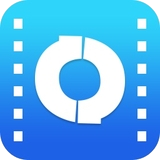
In today's era of rapid technological development, artificial intelligence technology has penetrated into every aspect of our lives. One exciting development direction is to enable artificial intelligence systems to watch videos and answer related questions. This function not only greatly expands the application scope of artificial intelligence, but also provides users with a more intuitive and convenient way to obtain information.
To achieve this goal, the first thing required is strong video understanding capabilities. This involves two core technologies, computer vision and natural language processing. Through computer vision technology, AI can identify elements such as objects, scenes, and character movements in videos. Natural language processing technology helps AI understand various complex questions raised by humans and give accurate answers. To achieve this goal, researchers have developed a variety of advanced models and algorithms.
Take Google's Vision API, for example, a cloud-based service that allows developers to upload images or videos to the cloud and leverage advanced machine learning models to analyze these media content. Vision API can automatically detect important features in videos, such as faces, landmarks, text, etc., and convert them into structured data. This way, even for non-technical people, it is easy to extract valuable information from videos.
However, it is not enough to have the ability to understand videos. AI also needs to have an excellent question and answer system. Such systems often rely on deep learning frameworks, such as TensorFlow or PyTorch, to build complex neural network models. These models are extensively trained to understand and generate natural language to respond to questions posed by users. It is worth noting that the performance of question answering systems is highly dependent on the quality and quantity of training data. Therefore, during development, it is crucial to collect diverse, high-quality training sets.
To better understand how to apply these technologies in real projects, we can refer to some successful cases. For example, YouTube's video search function uses the above method, allowing users to quickly find relevant video content by entering text descriptions. In addition, there are some applications specifically targeted at the education field, which use AI technology to parse teaching videos and then provide personalized learning suggestions and support based on students' questions.
Although current technology has made significant progress, there are still many challenges in video understanding and question answering. For example, how to improve AI’s object recognition accuracy in complex backgrounds, and how to more accurately understand the user’s intentions. However, with the continuous deepening of research and the advancement of technology, these problems will gradually be solved.
In short, by combining computer vision and natural language processing technology, AI is gradually realizing the ability to watch videos and answer questions. This not only heralds a major breakthrough in the field of artificial intelligence, but also brings unlimited possibilities to all walks of life. Whether it is for education, entertainment or commercial applications, this technology has shown great potential and value.
Attached: Related software usage tutorials and official website links
Google Vision API
- Official website: https://cloud.google.com/vision
- Tutorial: https://cloud.google.com/vision/docs/quickstart-client-libraries
TensorFlow
- Official website: https://www.tensorflow.org/
- Tutorials: https://www.tensorflow.org/tutorials
PyTorch
- Official website: https://pytorch.org/
- Tutorials: https://pytorch.org/tutorials/
Through the learning and application of the above technologies and tools, you will be able to build your own video understanding and question answering system and explore more innovative application scenarios.
-

Can AI transcribe YouTube videos?
On YouTube, artificial intelligence technology can automatically transcribe video content and generate subtitles or text files, greatly simplifying the video transcription process. This article explores how artificial intelligence can achieve this and describes its advantages and limitations.author:Azura Release time:2024-12-15 -

Can artificial intelligence summarize videos into sop?
The development of artificial intelligence technology makes it possible to extract key information from video content and generate structured summaries. Through deep learning and natural language processing algorithms, AI can automatically analyze scenes, dialogues and actions in videos and convert them into clear and concise SOP (standard operating procedure) documents. This article explores this innovative application and its potential impact.author:Azura Release time:2024-12-08 -

Can AI remove screams from videos?
Today, with the increasing development of video processing technology, artificial intelligence can accurately identify and remove screams from videos, thereby providing a more comfortable audio-visual experience. This article explores the applications of this technology and its potential impact.author:Azura Release time:2024-12-11 -

Can AI help find videos?
In massive video data, artificial intelligence technology can efficiently analyze and understand video content, thereby helping users quickly find the video resources they need and improving search efficiency and accuracy. This article will explore how artificial intelligence can assist video search and introduce relevant application examples.author:Azura Release time:2024-12-07 -

Can AI generate videos from text?
Artificial intelligence technology is constantly developing and is now able to automatically generate corresponding video content from text descriptions. This development opens a new chapter in multimedia content creation. This article explores how this technology works, its application areas, and its future potential.author:Azura Release time:2024-12-07 -

Can AI fix blurry videos?
In today's digital age, video clarity is critical to the viewing experience. With the development of technology, people have begun to explore the possibility of using artificial intelligence to repair blurry videos. This article will explore the application of artificial intelligence in improving video clarity and its practical effects.author:Azura Release time:2024-12-15 -

Can AI edit videos for YouTube?
On YouTube, artificial intelligence technology is gradually being applied to the field of video editing, which can automatically edit, classify and optimize video content, thereby improving users' editing efficiency and video quality. This article will explore how artificial intelligence assists YouTube users in editing videos, and analyzes the conveniences and challenges it brings.author:Azura Release time:2024-12-19 -

Can artificial intelligence make ASMR videos?
Under the current technological background, artificial intelligence has been widely used in the field of content creation, including music, painting, and video production. Especially in ASMR video production, AI technology shows unique advantages and potential. It can automatically generate audio content with a relaxing effect by analyzing and imitating human voice characteristics. This article will explore how artificial intelligence can create ASMR videos and evaluate its possibilities in improving user experience.author:Azura Release time:2024-12-07 -

Can artificial intelligence create animated videos?
The development of artificial intelligence technology has penetrated into various fields, and animated video production is no exception. By using machine learning and algorithms, artificial intelligence can automatically generate high-quality animated content, greatly improving creative efficiency and reducing production costs. This article will explore the application of artificial intelligence in animated video production and the changes it brings.author:Azura Release time:2024-12-07 -

what is the best text to video ai
In today's digital age, choosing the best text-to-video AI tool is crucial to improving creative efficiency and content quality. This article will discuss several leading text-to-video conversion technologies currently on the market to help readers understand their characteristics and applicable scenarios, so as to find the most suitable solution for them.author:Azura Release time:2024-12-13





